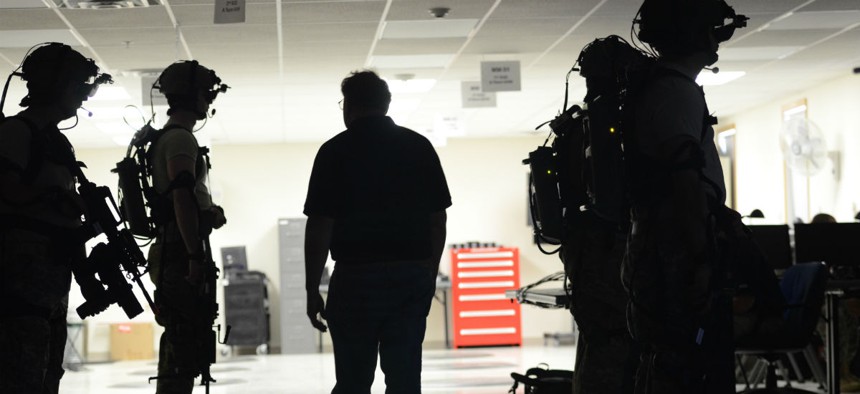GAO: Army Needs More Virtual Training

Soldiers train with a virtual reality simulator during exercise Guardian Justice June 21, 2016. Adam Parent/U.S. Army
The watchdog recommended the Pentagon adjust policies to allow virtual training to be used more broadly.
The Pentagon should tweak training policy to encourage more virtual instruction, a watchdog report recommends.
The Government Accountability Office recently assessed the Army's use of virtual training—an alternative to live training that includes battlefield simulations—and identified a handful of gaps in the military branch's use of the technology.
The Army is currently adjusting training programs to prepare forces for a "broader range" of operations, and ramping up virtual training has been one of its priorities, the report said.
» Get the best federal technology news and ideas delivered right to your inbox. Sign up here.
Virtual training can help people hone their skills before they try out live training—especially when the physical environment is unavailable—but can also simulate conditions "that are not possible to achieve in live training," GAO wrote.
And in the next few years, the Army will face "an increasingly complex security environment that will demand a wider range of skill sets and different capabilities than those used during operations in the Middle East."
But Army training policy doesn't actually define how virtual training devices should be evaluated, or what criteria should be used in selecting them, and operational training strategies GAO examined didn't always describe how certain tasks could be done with virtual technology, the report said.
The Army also needs more analysis to determine the mix of virtual and live training; without such "front-end" analysis incorporating training time and the specific tasks to be taught, it doesn't have the data it needs to decide how much virtual training it should acquire.
The Pentagon generally concurred with the recommendations.
GAO highlighted a few reasons why training officials might prefer live training. One told GAO a Mine Resistant Ambush Protected vehicle driving simulator "does not simulate all tasks required of drivers, such as dismounting during an operation to conduct maintenance on a vehicle."
An Army audit report from 2014 found "unit commanders preferred live training over virtual training," and were more likely to choose it, the GAO report said. "[S]ome unit officials stated that they have forgone virtual training to focus their unit’s limited time on training in a live environment."
Officials from 14 of 21 units across the four combat teams GAO examined said if the detailed training strategies prescribed the devices should be used, they were likely to use them. If training strategies "required specific training on virtual training devices before soldiers could train live," the report said, they were "among the most used devices."
NEXT STORY: Alliant 2 Deadline Extended


